A fortress city shining in the azure blue of the Adriatic Sea
2020/7/15
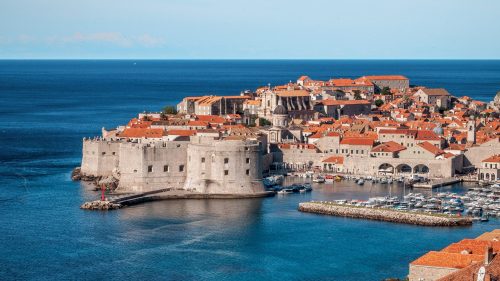
“Those looking for a paradise on earth – come to Dubrovnik.” Dubrovnik is a town renowned by the playwright Bernard Shaw, author of the play Pygmalion, on which the movie “My Fair Lady” is based. The orange tiled roofs fill the space between the azure blue of the Adriatic Sea and the old town. The scenery weaved by these aspects is something you must see once in your lifetime. This scenery is a key reason Peace Boat frequently calls to this port. Peace Boat participants usually describe it as a town beautiful beyond expectations, and that they would definitely like to return to in the future. It is also a favorite port of call of many of our long-term staff members.

Walk along the walls surrounding the Old Town of Dubrovnik
We headed first to the west side of the Old Town, surrounded by sturdy walls, to pass the Pile Gate. As we approached the walls our excitement grew, and once we entered the old town the scenery changed completely. Marble cobblestone streets, buildings and fountains built by stacking stones, and orange tiled roofs that separate the white of the city from the blue sky when you look up. A medieval world expanded in front of us. One of the best ways to enjoy this city is through its walls. From the side of the Pile Gate, climb the stairs to the top of the walls. The scenery changes with each step, and you will surely stop many times to admire it. In particular, the view from the Minceta fortress on the north side is wonderful, as you can see the Adriatic Sea and the old town at the same time.
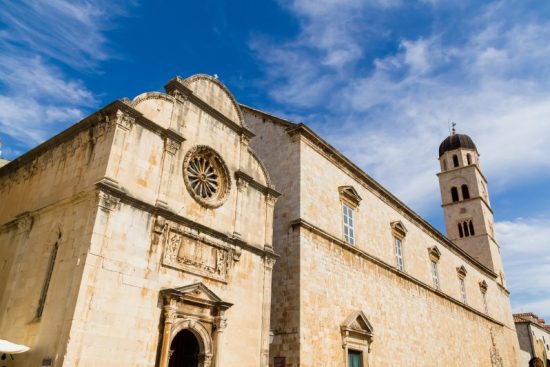
Walk on the main street of the Old Town of Dubrovnik
After going around the walls, it’s time to take a walk in the old town. We walk around Placa Street, the main street that extends just beyond the Pile Gate. Peek into the souvenir shops and search for cozy restaurants while exploring historic buildings such as churches, monasteries and palaces. Immediately after entering the Pile Gate is the Franciscan Monastery. Lotions and creams made with secret recipes that date back to the Middle Ages are popular as souvenirs. A must-see is the “Mala Braća”, Europe’s third oldest pharmacy in Europe which was founded in 1391 and is surprisingly still running.
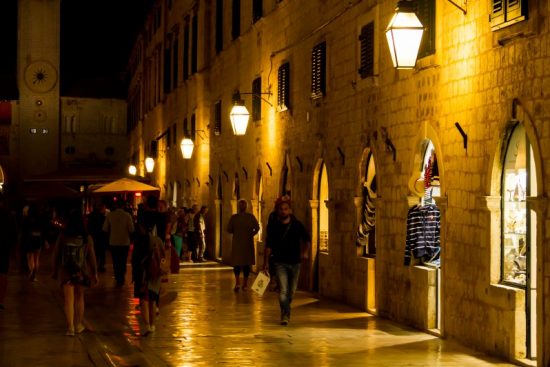
Another way to enjoy the old town are the back alleys. You can discover wonderful shops and get a glimpse of the lives of people living in this town by walking along the narrow roads with stone steps. The narrow alleys that stretch over the old town make a nice photograph anywhere you frame it. Explore the Old Town as you climb and descend the long stairs. Walking around the Old Town at night is also fascinating. Illuminated by classical outdoor lights, the marble road reflects the lights brilliantly, showing a different charm from daytime.
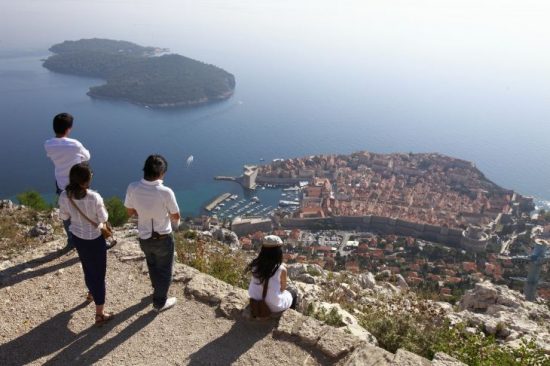
Go to the summit of Mt. Srđ for a spectacular view of Croatia
After visiting Dubrovnik, there is a place you must go: the summit of Mt. Srđ, which stands behind the Old Town. You can take a cable car that departs from just outside the Old Town and enjoy a short aerial walk. It takes about 5 minutes by cable car to reach the summit. Otherwise, you can reach it by taxi in about 10 minutes, or of course you can walk up… The altitude of the summit is 412 meters. Once you arrive, head to the observatory. There is a magnificent panoramic view of the entire area. The breezes blowing from the Adriatic Sea are so comfortable that you can forget about the time and enjoy the view forever.

Below you can see the Old Town where we just had been walking, and beyond that the Adriatic Sea with its deep blue water spreading across the horizon. This symbolic scenery of Dubrovnik is considered to be one of the most beautiful sceneries on the planet. It’s a view that justifies the city being called the “Pearl of the Adriatic Sea”. However, just over 20 years ago, the city was in a state of turmoil and had been largely destroyed by bombardments. If you take a closer look at the orange roof tiles, you can see that there are some dull ones and others that are more vivid. The latter were newly installed during the post-conflict reconstruction of the city. If you visit with such a background in mind, I am sure you will appreciate the importance of peace.
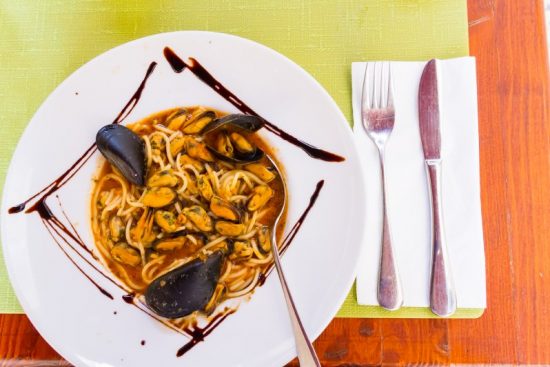
Fresh seafood plays a major role in the cuisine of Croatia’s Adriatic coast. Due to the influence of Italy, just across the Adriatic Sea, it features simple seasoning that makes the most of the ingredients. With octopus, squid, shrimp and mussels lined up, Croatia’s oysters are among the best in the world. Squeeze a lemon onto an oyster and slip it into your mouth. The scent of the Adriatic Sea and the tightly condensed flavors spread throughout your mouth. This time, along with white wine, is truly a blissful moment.
